How Putin’s bodyguards operate
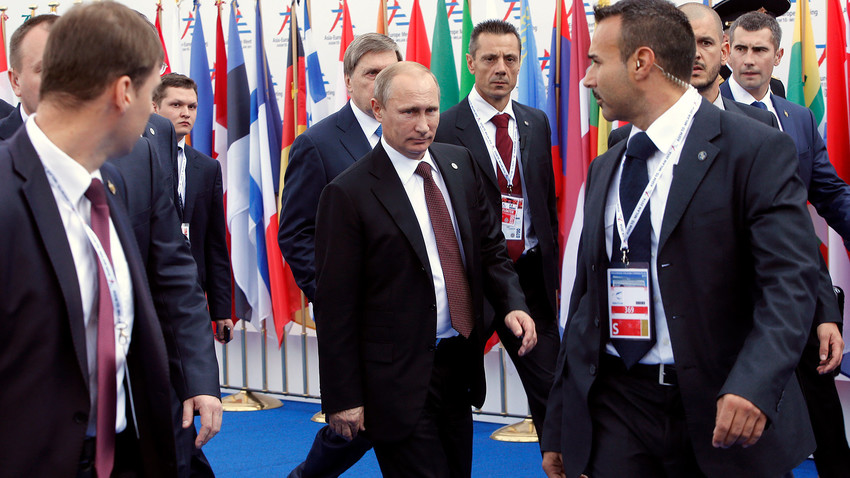
Vladimir Putin is surrounded by bodyguards as he leaves the Europe-Asia summit (ASEM) in Milan on October 17, 2014.
ReutersMonths before Vladimir Putin leaves his residences to appear in public anywhere, his security team is already afoot. First, the team analyses all possible threats: criminal activity, social unrest, image perception and even the possibility of natural disasters, e.g. earthquakes or floods in the region during the potential visit.
The preparation
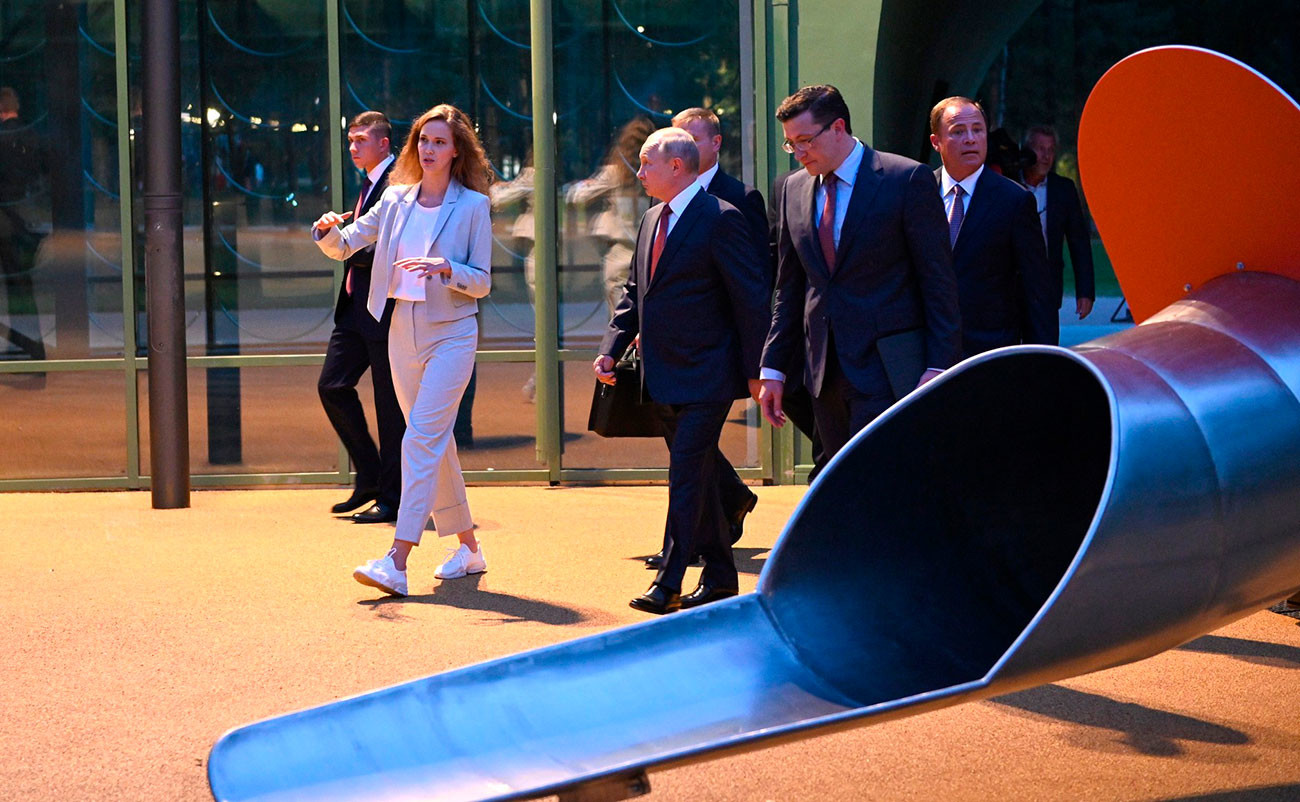
Vladimir Putin and his bodyguards on a visit to Nizhny Novgorod.
kremlin.ruAbout a month before the president’s visit, members of the team arrive at the place to coordinate their security schedule with the local authorities and check the accommodation where the president will be staying. Everything is repaired to the last doorknob, so that during the president’s stay, no technicians or repairmen would need to access the living quarters.
The security team’s IT engineers and technicians install jammers to block any radio detonation signals to the president’s location. The equipment maintained by the president’s surveillance team pings all smartphones and other devices in immediate proximity to the president’s location to control any suspicious activity. For those of you concerned with privacy issues – according to Russian laws, the president’s security has the right to install and use tapping hardware and software of any kind, conduct body searches, have access to any building and organization or seize any vehicle – if any of this is necessary for the security of the president. However, seizure of civilian vehicles is allowed only “in extreme conditions” and there are no official records of even a single such occasion occuring. Only after such thorough preparations have been executed does the president arrive and the security sets on to its immediate work.
Whom does the Federal Protective Service protect
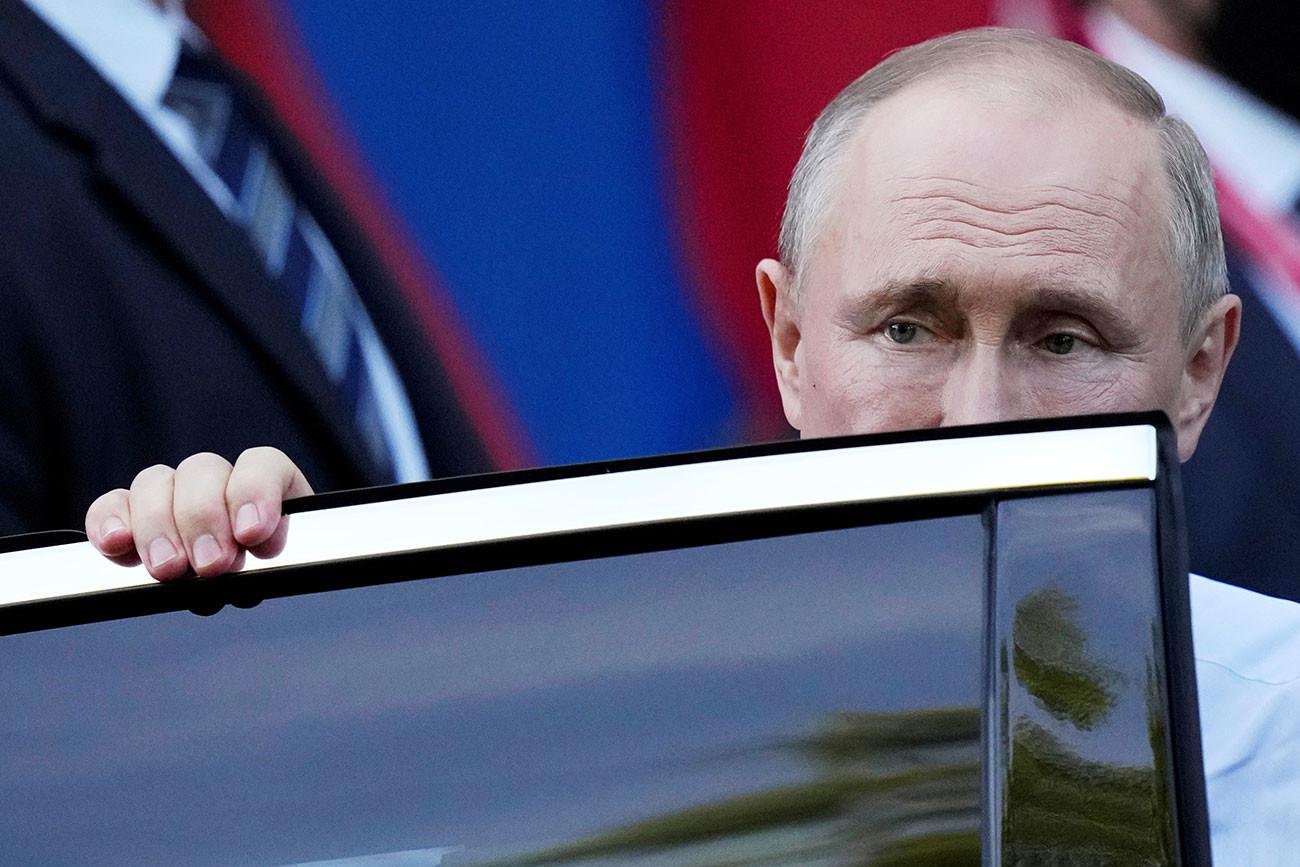
Russian President Vladimir Putin gets into a limousine as he leaves Villa La Grange after his meeting with U.S President Joe Biden in Geneva, Switzerland June 16, 2021.
Alexander Zemlianichenko/Pool via ReutersThe special service responsible for the security of the Russian president is called the Federal Protective Service (official name in English – ‘Federal Guard Service of the Russian Federation’). Its staff records and financing are partly classified, but half-official sources say it numbers over 50,000 employees in total. Why so many?
Apart from the president, the Federal Protective service actually ensures the security of many people:
Prime Minister (currently, Mikhail Mishustin)
Speakers of the State Duma and the Soviet of Federation,
Ministers of Foreign Affairs and Defense,
Director of the Federal Security Service,
Chairman of the Security Council,
Head of the Presidential Administration and his deputies,
Chairman of the Central Election Commission.
For other statesmen, personal security can be granted by the president’s special order.
READ MORE: ‘Putin's people’: The mysterious agency that guards the president’s life
Who are Putin’s bodyguards
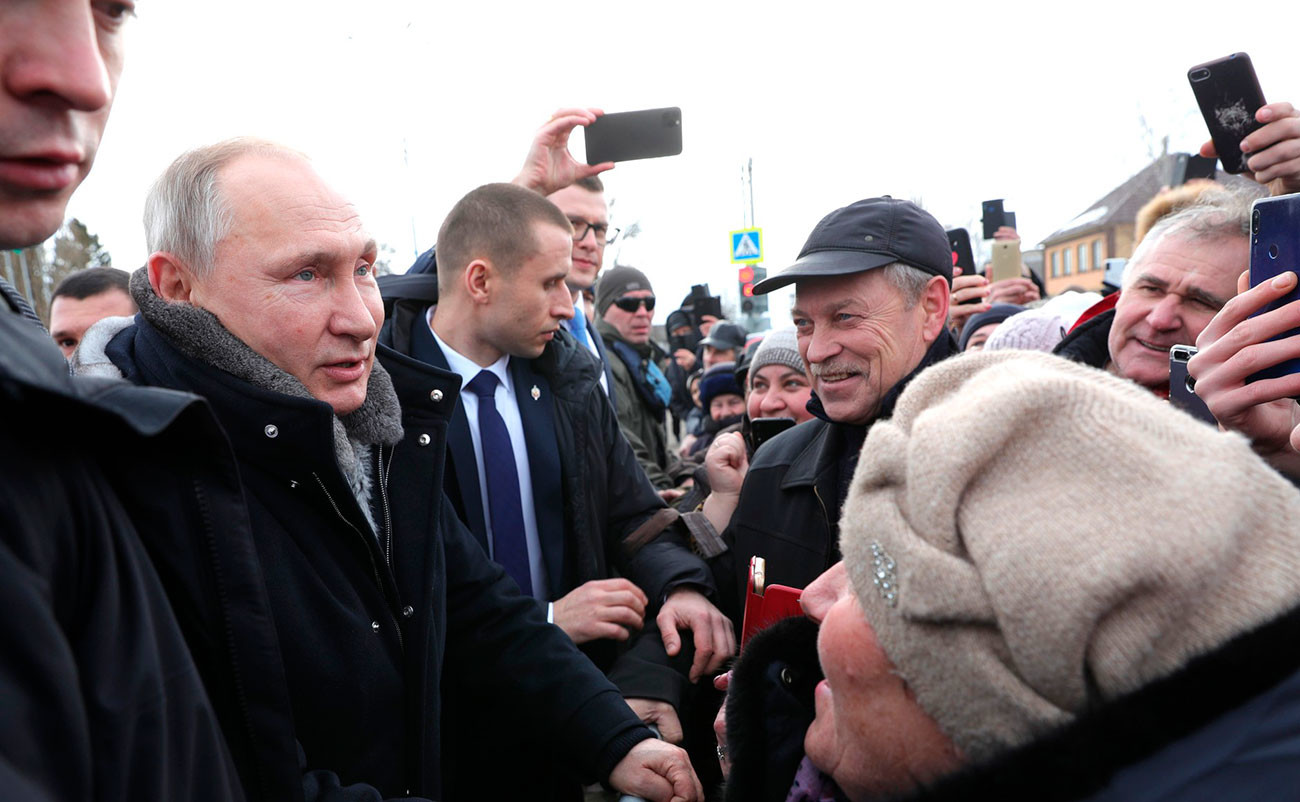
The bodyguards operate close to their ward during a meeting with people, January 22, 2020
kremlin.ruInside the Federal Security Service, a special unit ensures the President’s personal security. Surprisingly, the requirements for this position don’t include real war experience. “It is unlikely that the president’s security guard will have to arrange ambushes on mountain trails or jump with a parachute,” a former president’s security employee says. “Combat experience is useful, but it’s often not applicable in our work. During war, you attack. And a bodyguard should only protect the dignitary from someone invisible.”
This is why former police operatives aren’t fit for this work – they are trained to apprehend and for the president’s bodyguards, his security is the first priority, not the necessity to apprehend the attacker. The guard must have “operational psychology”, which means being able to anticipate and prevent threats and to do this unnoticed by others, which is also important. Other requirements for the position: applicants must be younger than 35, have a height between 175 and 190 cm and weight between 75-90 kg.
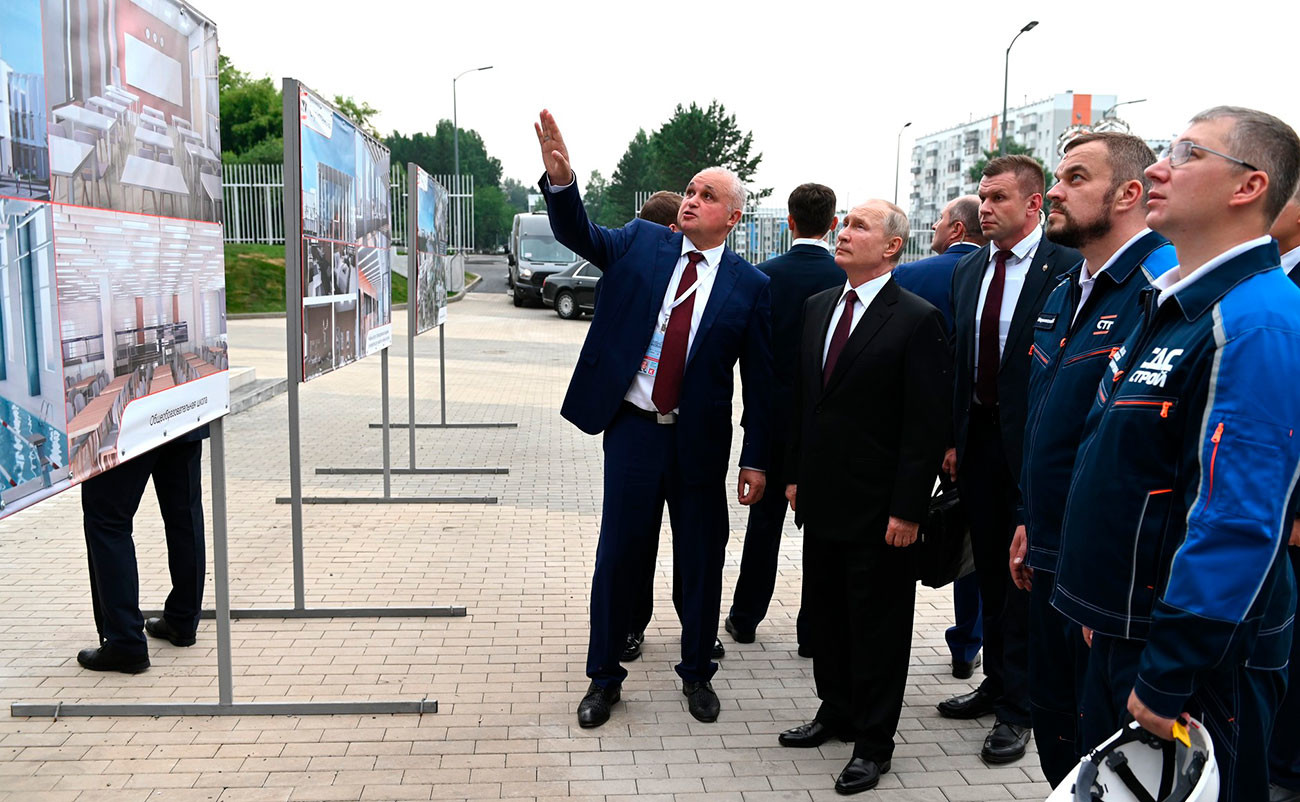
The president’s personal guards must also understand foreign languages and be basically proficient in politics – just to understand who approaches the president and how these people should be treated. In this video, the security team asks Conor McGregor to remove his hand from Putin’s shoulder.
The president’s guards have high stamina. They are trained to sustain considerable cold in light overcoats (thick overalls can hinder their movements) and not sweat in heat. According to some reports, they use medicines that affect physiological processes. By the way, the bodyguards are allowed to smoke cigarettes – it helps to calm the stress quicker, but of course not during training or work. The president’s bodyguard’s work is highly draining, which is why they are discharged after 35.
How Putin’s bodyguards work and what equipment they use
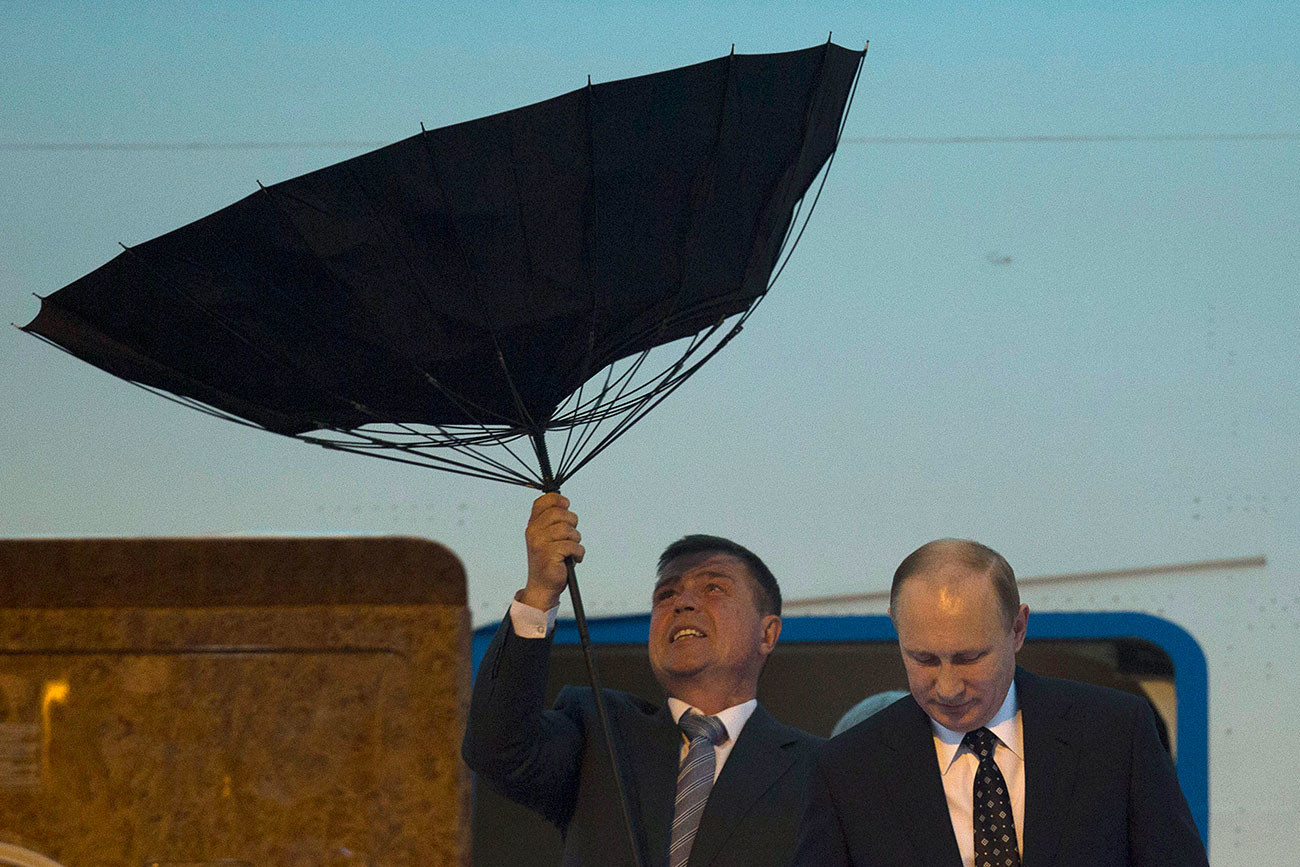
A security personnel struggles with an umbrella as Russia's President Putin walks out of a plane upon arriving at the airport ahead of the fourth summit of the CICA held in Shanghai. 19/05/2014
ReutersDuring “action” (the president’s time in public), the guards are loosely organized in four circles. The closest circle to the president are his personal bodyguards, menacingly looking guys in suits, dark sunglasses, with an earpiece in their ear and a suitcase. They look ominously for a reason – for attackers, this is the first sign that the dignitary is closely protected.
Another detail that hints at a bodyguard is his hands – they are always in front of the body, left hand often raised halfway. This is a compulsory requirement – the guard must always be in an alert position. Because the immediate task of the ‘first circle’ in case of danger is to shield the president with their bodies. Look at how they do it in this video from Hannover, 2013, during Femen protest group attack:
The suitcases these guys are carrying are protective shields that can be deployed to protect the president from bullets. The guards are armed with a 9-mm ‘Gurza’ pistol that can shoot up to 40 bullets per minute, penetrating bulletproof vests from a 50-meter distance. However, if a shootout occurs, that means the security team has failed – any attacks should be above all prevented beforehand. Another piece of equipment meant to protect the ward are kevlar umbrellas carried around by the guards – they are super sturdy and can protect from projectiles.
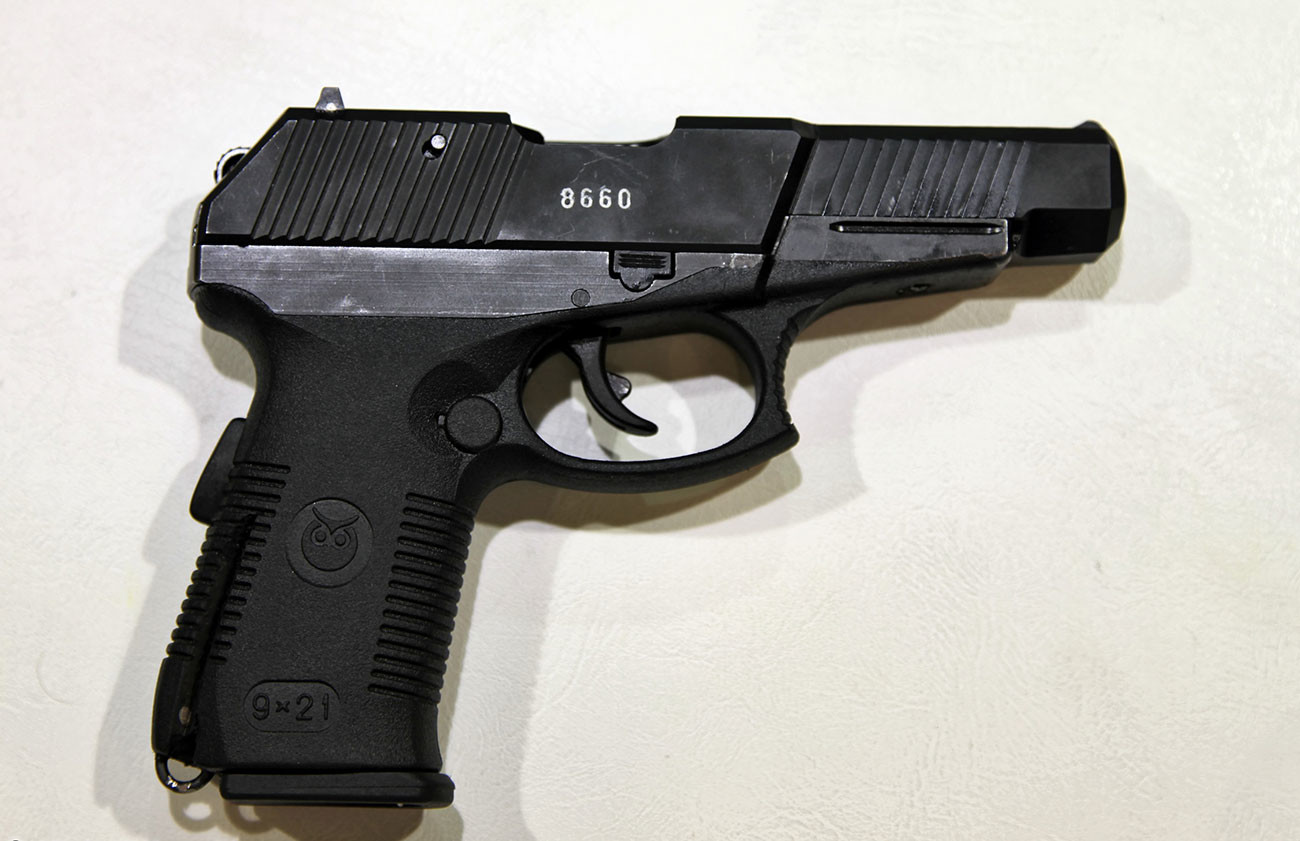
'Gyurza' pistol
Vitaly V. KuzminHowever, it’s not the ‘first circle’ guards that are the most important, but the second – unlike the first, they are totally inconspicuous in the crowd, dressed formally and behaving discreetly, they are searching for potential attackers. The ‘third circle’ encircles the perimeter of the crowd, preventing suspicious persons from being in the president’s proximity. The ‘fourth circle’ are snipers situated on the roofs of the surrounding buildings. That’s why it’s dangerous to run, scream, make hasty movements near the president – you’ll get a red dot on your head in seconds.
Also, during the president’s appearance in wide public spaces, additional protective equipment might be installed. In this video of Vladimir Putin honoring the late mayor of St. Petersburg Anatoliy Sobchak by laying flowers to his monument, you can see the bulletproof glass screens behind the president’s back, installed especially for the occasion.
Finally, the heavy part of the unit travels with the president’s cortege in armored vans (extreme driving is also a required skill for most of the president’s security). These guys are spec ops armed with AK-47s, Dragunov sniper rifles, anti-tank grenade launchers and portable ‘Osa’ (‘Wasp’) anti-aircraft missile systems.
However, the main asset of the president’s security in case of Vladimir Putin is the president himself. Having had the experience of working in Soviet and Russian secret service, Putin is “a mostly manageable dignitary”, according to several former officers of the president’s security. He knows that his security team knows what they’re doing and he always complies to their security demands.
This article is based on various sources, from official ones to anonymous interviews of former employees of the presidential security.
If using any of Russia Beyond's content, partly or in full, always provide an active hyperlink to the original material.
Subscribe
to our newsletter!
Get the week's best stories straight to your inbox